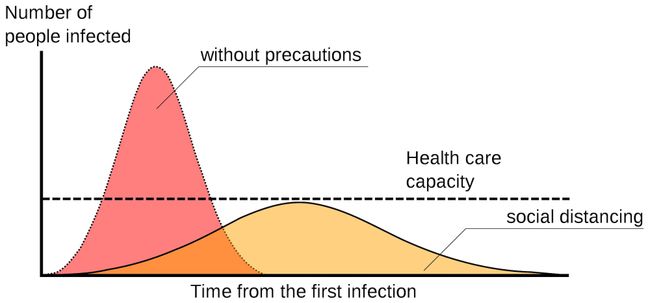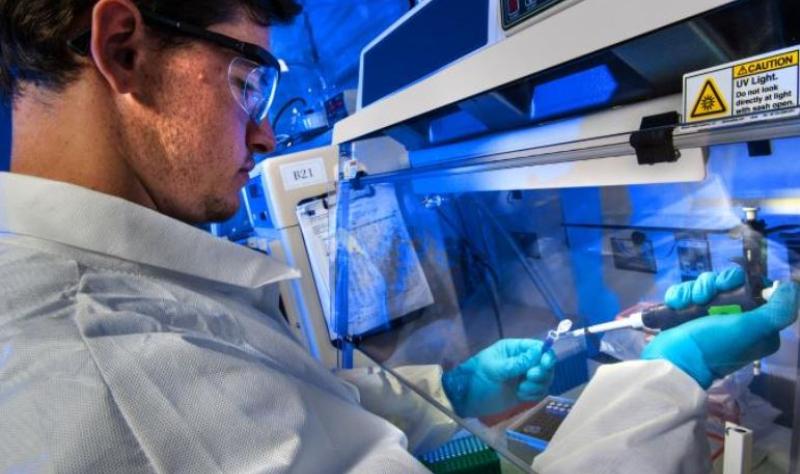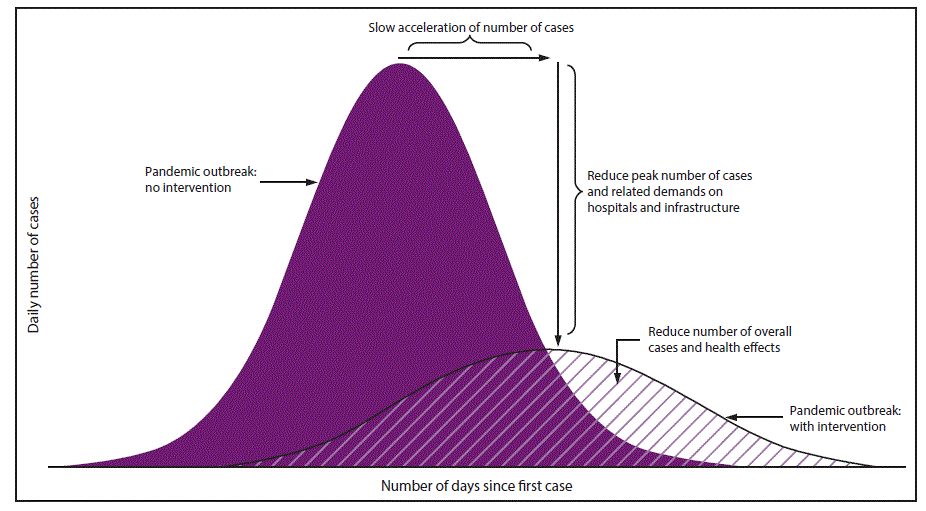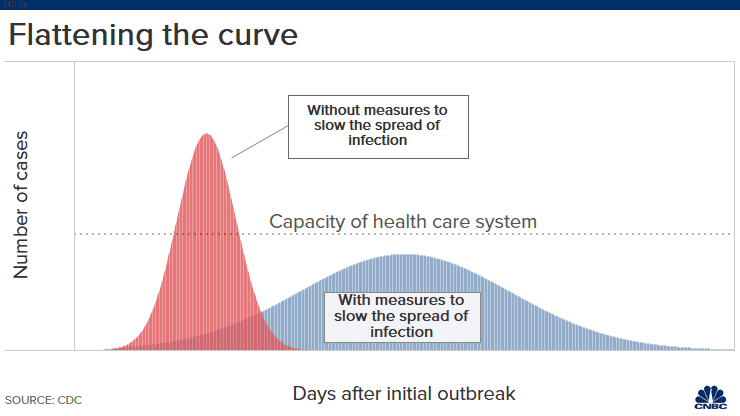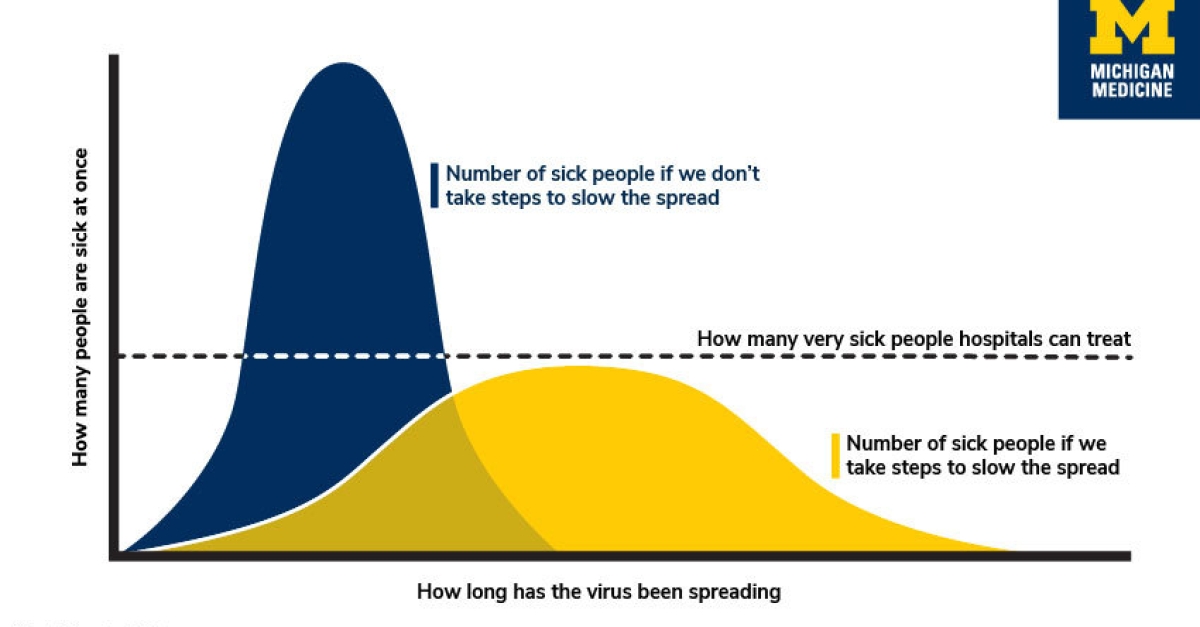Those are important considerations as well. All I'm saying is it's not a cheap talking point to say the goalposts have shifted on the justifications for the stay-at-home orders.
Back in early March, people reluctantly followed the orders and closed their businesses, in large part because of the infamous "flatten the curve" chart. We could all imagine the nightmare scenario of blowing the lid off that dashed line:
I'm not sure we ever got close to the dashed line as a country; we certainly came close in NYC. But if the "health care capacity" issue is not currently an immediate threat, then we need to forget about the chart altogether, because that is why the chart existed in the first place.
So if we discard the chart, then we lose our justification for the stay-at-home orders.
Which means a new justification needs to be articulated. And it needs to weigh the public health costs of continued economic devastation with the costs of an increase in cases.

